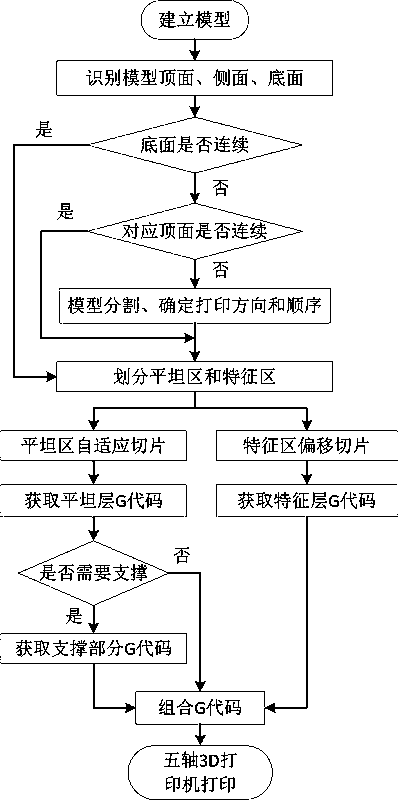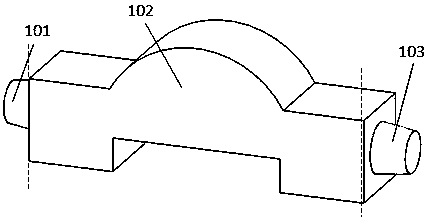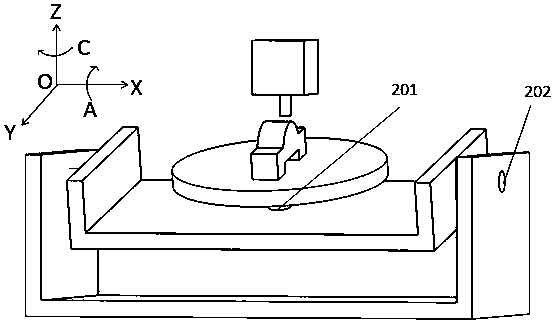Model surface characteristic-based five-axis linked 3D printing method of adaptive hybrid section
A five-axis linkage and surface feature technology, applied in the field of space 3D printing, can solve the problems of surface quality degradation, time increase, low mechanical properties, etc., to improve surface quality and structural performance, reduce surface roughness, and increase step effect. Effect
- Summary
- Abstract
- Description
- Claims
- Application Information
AI Technical Summary
Problems solved by technology
Method used
Image
Examples
Embodiment Construction
[0039] The present invention is described in detail below in conjunction with accompanying drawing and embodiment, and present embodiment is carried out under the premise of technical solution of the present invention, has provided detailed embodiment and specific operation process, but protection scope of the present invention is not limited to the following the described embodiment.
[0040] Such as figure 1 As shown, the present invention is a five-axis linkage 3D printing method based on hybrid adaptive slicing of model surface features, comprising the following steps:
[0041] In this example, SolidWorks software is used as the 3D modeling software to establish figure 2 The workpiece model shown is stored as an STL format file.
[0042] Such as image 3 As shown, the model is placed in the space Cartesian coordinate system, according to the characteristics of the five-axis linkage 3D printer, the A axis 202 rotating around the X axis (the swing axis of the printing pl...
PUM
 Login to View More
Login to View More Abstract
Description
Claims
Application Information
 Login to View More
Login to View More - R&D
- Intellectual Property
- Life Sciences
- Materials
- Tech Scout
- Unparalleled Data Quality
- Higher Quality Content
- 60% Fewer Hallucinations
Browse by: Latest US Patents, China's latest patents, Technical Efficacy Thesaurus, Application Domain, Technology Topic, Popular Technical Reports.
© 2025 PatSnap. All rights reserved.Legal|Privacy policy|Modern Slavery Act Transparency Statement|Sitemap|About US| Contact US: help@patsnap.com



